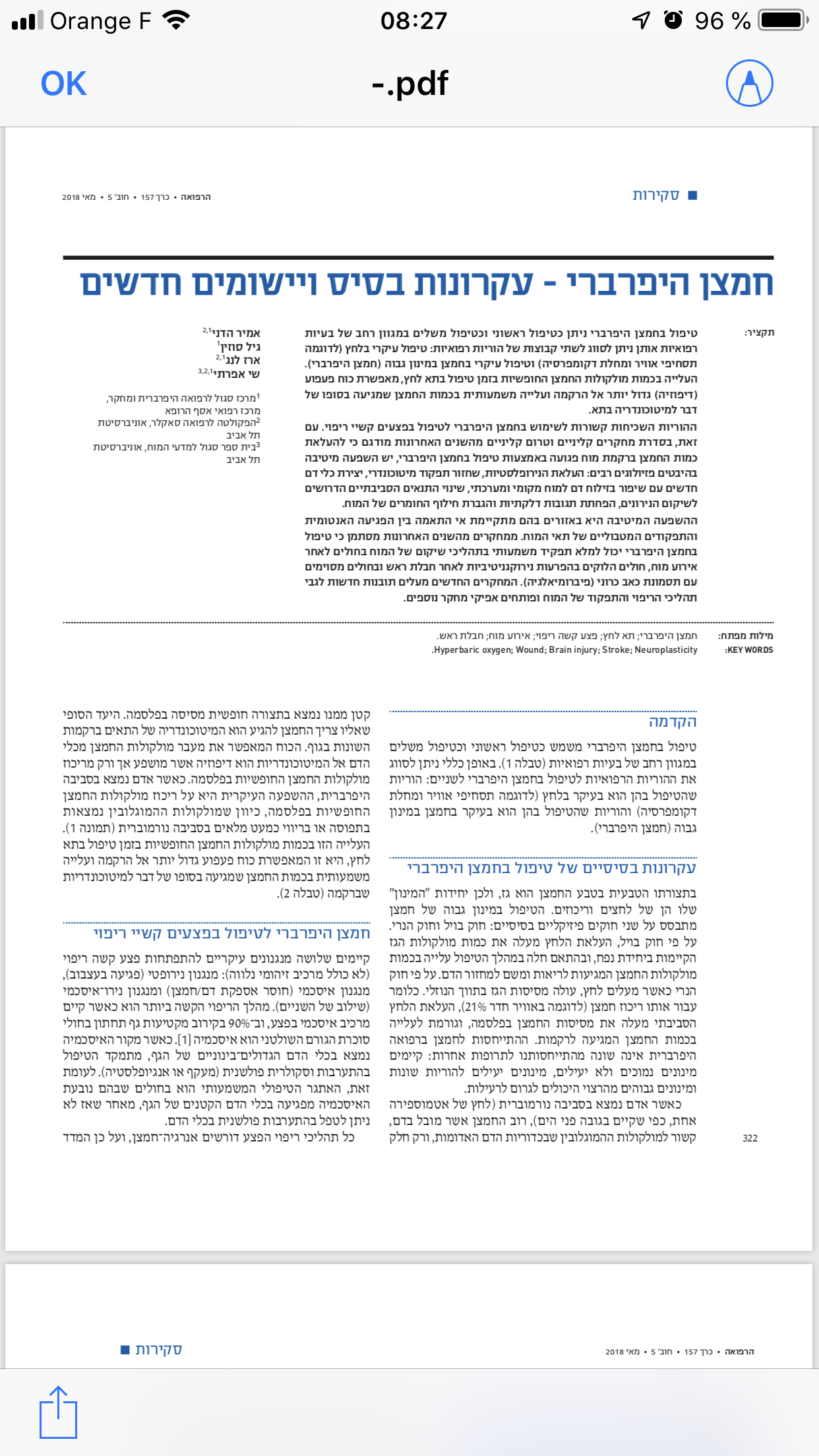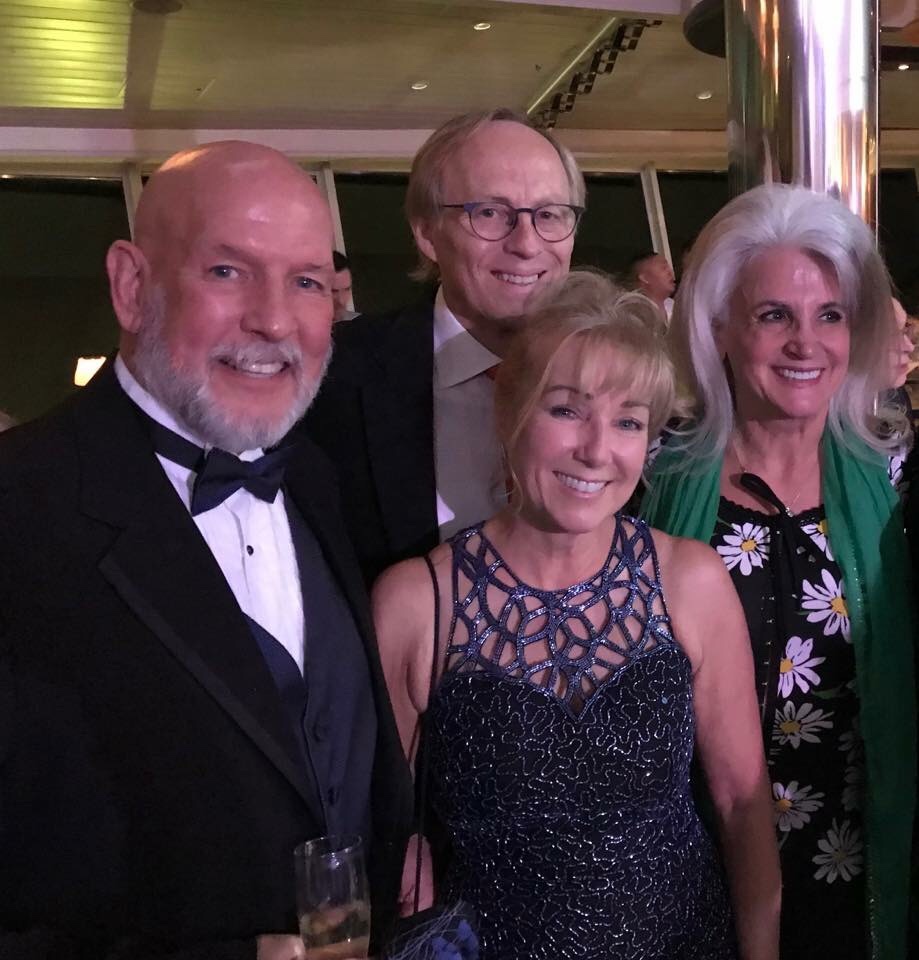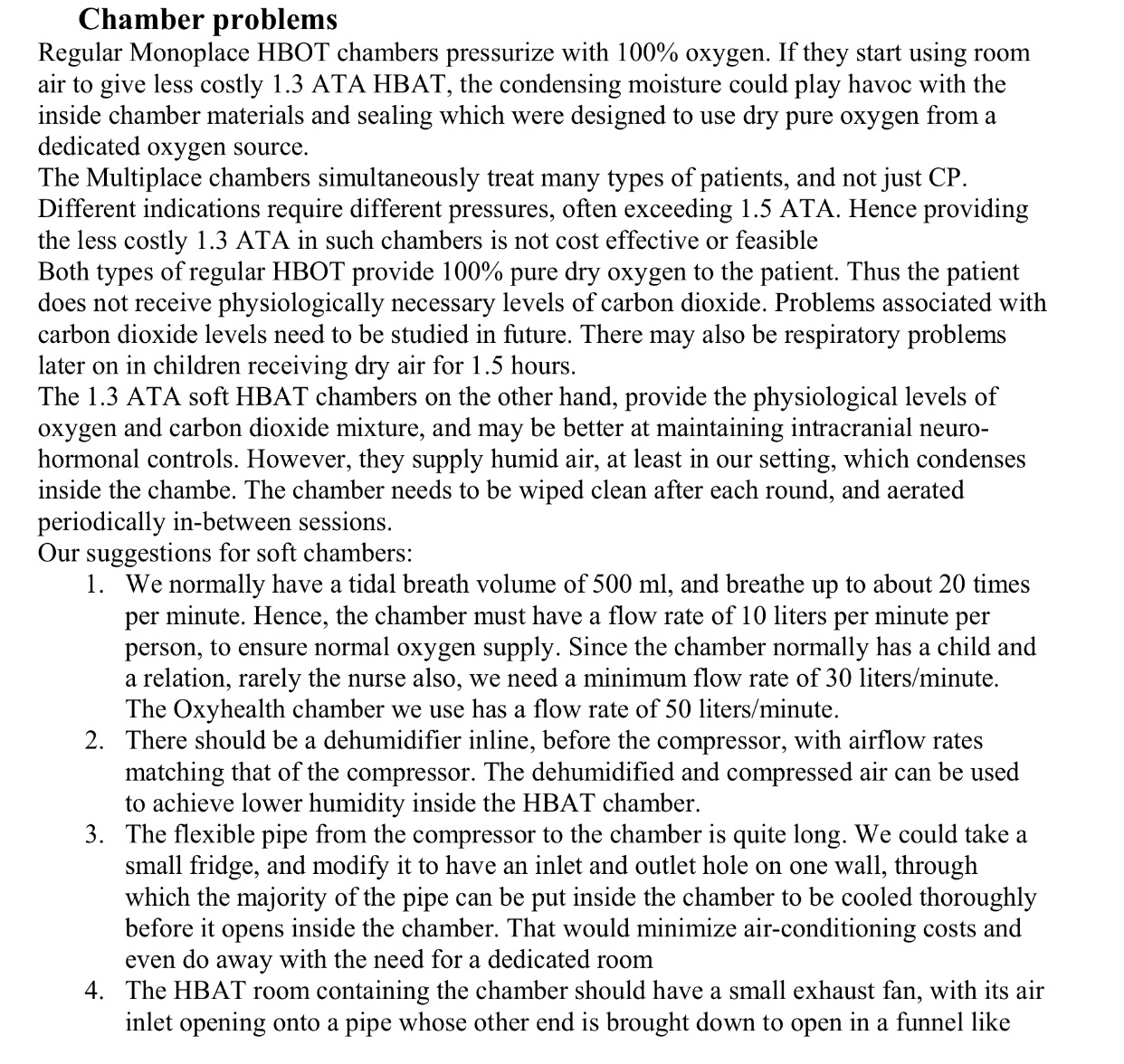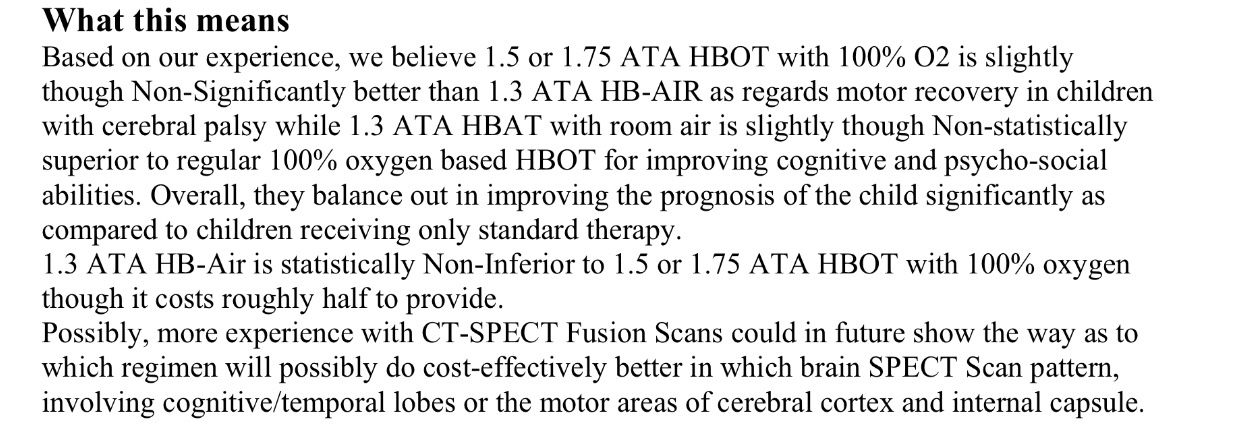Very good article to read: Hypoxia and hyperbaric oxygen therapy: a review
« The manner in which HBOT affects the body as a conse- quence of primary and secondary effects should be under- stood. The primary, or direct effects, include correcting the hypoxic condition by increasing oxygen delivery and tension, antimicrobial activity, and the attenuation of the HIF-mediated effects. The secondary effects include indirect consequences of HBOT, such as reducing the formation of ROS, increasing the body’s ability to heal, vasoconstriction, and angiogenesis, as well as subduing inflammation.57 The therapeutic pressures used in HBOT are described in terms of atmospheres of pressure ranging from 1.5 to 3.0 atm. In general, lower partial pressures are favored to avoid baro- trauma to the lungs, ear drums, sinuses, and teeth. Oxygen toxicity seizures are rare in clinical use of HBOT, but have been reported.58 Pressures and duration of HBOT differ between treatment centers, and standardized protocols require further investigation. »
« The secondary benefits of HBOT include reducing inflam- mation, attenuating reperfusion injury, promoting wound healing, and improving circulation. The primary benefits include increased oxygen tension, antimicrobial activity, and blocking HIF activity. Overall, HBOT is a safe and well- tolerated therapy when used under the direction of experi- enced and licensed treatment facilities. Side effects of HBOT are self-limiting and rare due to screening. HBOT has so many potential benefits and modalities for its use. It seems strange that HBOT has failed to gain widespread support. This is likely due to the history of HBOT and public opinion. »
»
HBOT has many current indications for treatment due to its ability to counter oxygen deficits, promote healing and angiogenesis, fight infection, and control inflammation. Inflammation is the body’s response to all insults and, in some instances, the body loses control over the system. This can lead to chronic disease or play a role in the development of disease. Evidence supporting the utility of HBOT as an anti-inflammatory treatment is growing. HBOT offers the possibility of a new drug class and will require more research to determine its dosing and indications for treating disease. The use of HBOT to treat the secondary injury process that causes damage in acute conditions could prove to be very valuable.56 Technological advances that make HBOT more available promote its potential to fight death and disability. »
Français ( en bref)
La manière dont l’OHB ( Hyperbare)affecte le corps à la suite d’effets primaires et secondaires doit être comprise. Les effets primaires, ou directs, incluent la correction de l’hypoxie en augmentant l’apport en oxygène et la tension, l’activité antimicrobienne et l’atténuation des effets induits par HIF. Les effets secondaires comprennent les conséquences indirectes de l’OHB, telles que la réduction de la formation de ROS, l’augmentation de la capacité de guérison du corps, la vasoconstriction et l’angiogenèse, ainsi que la maîtrise de l’inflammation.
Les pressions thérapeutiques utilisées dans l’OHB sont décrites en termes d’atmosphère de pression. (de 1,5 à 3,0 atm. )
En général, les pressions partielles plus basses sont privilégiées pour éviter les barotraumatismes des poumons, des tympans, des sinus et des dents.
Les crises convulsives dues à la toxicité de l’oxygène sont rares dans l’utilisation clinique de l’OHB mais ont été rapportées.
Les pressions et la durée de OHB diffèrent d’un centre de traitement à l’autre et les protocoles standardisés nécessitent des investigations complémentaires.
Les avantages secondaires de l’OHB comprennent la réduction de l’inflammation, l’atténuation des lésions de reperfusion, la promotion de la cicatrisation des plaies et l’amélioration de la circulation.
Les principaux avantages comprennent l’augmentation de la tension en oxygène, l’activité antimicrobienne et le blocage de l’activité HIF.
Dans l’ensemble, l’OHB est un traitement sûr et bien toléré lorsqu’il est utilisé sous la direction d’établissements de traitement expérimentés et agréés.
Les effets secondaires de l’OHB sont spontanément résolutifs et rares en raison du dépistage. L’OHB présente de nombreux avantages et modalités d’utilisation.
Il semble étrange que l’OHB n’ait pas réussi à obtenir un large soutien.
Cela est probablement dû à l’histoire de l’OHB ( Hyperbare) et à l’opinion publique.
l’OHB ( Hyperbare) a de nombreuses indications actuelles de traitement en raison de sa capacité à lutter contre les déficits en oxygène, à favoriser la guérison et l’angiogenèse, à lutter contre les infections et à contrôler l’inflammation.
L’inflammation est la réponse du corps à toutes les insultes et, dans certains cas, le corps perd le contrôle du système. Cela peut conduire à une maladie chronique ou jouer un rôle dans le développement de la maladie. Les preuves à l’appui de l’utilité de l’OHB en tant que traitement anti-inflammatoire se développent.
l’OHB ( Hyperbare) offre la possibilité d’une nouvelle classe de médicaments et nécessitera plus de recherche pour déterminer sa posologie et ses indications pour le traitement de la maladie.
L’utilisation de l’OHB ( Hyperbare) pour traiter le processus de blessure secondaire causant des dommages dans des conditions aiguës pourrait s’avérer très utile.
Les avancées technologiques qui rendent l’OHB ( Hyperbare) plus disponible renforcent son potentiel de lutte contre la mort et l’invalidité.






 I just connected with Claudine Lanoix I really want to tell her Cp children’s story ( she promised to make her testimonials later so I will post it as well soon)
I just connected with Claudine Lanoix I really want to tell her Cp children’s story ( she promised to make her testimonials later so I will post it as well soon)

